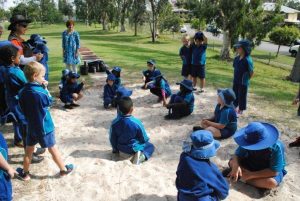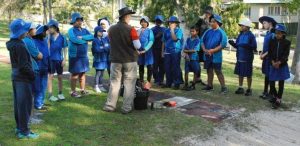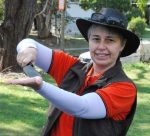In this program, we set up a mock archaeological dig in a sandpit (or long jump pit) so that students can get a taste of life as an archaeologist.
History has never been so cool!
Scientific Investigation

Much more than just an interactive experience, we run the archaeological dig as a full scientific investigation. Students cover not only the basics of archaeology, but also how to conduct a scientific investigation. Students are expected to produce a scientific report as their assessment for this module.
Level
The archaeological dig program is available for all year levels in either Primary or High School, with workbooks tailored to be year-level appropriate.
- Students in Years 3 and higher are expected to draw conclusions from their material and to include these conclusions in their report.
- Students in Foundation (K/Prep) to Year 2 are guided through the basic process of a scientific investigation.
Contents
Students will excavate a range of artefacts and other material. Resources are provided to help students analyse the excavated material and thus address their hypothesis for the scientific report.

The archaeological dig program includes:
- the setup of the excavation;
- the excavation workshop;
- a range of 3D printed and other resources;
- resource information booklets;
- a scientific investigations workbook for students;
- teachers handbook and assessment guide for each participating year level.
Scheduling

The program has 5 components, ideally run over 5 weeks:
- an introductory week;
- a preparation and setup week (2 hour workshop);
- one week for excavation (2 hour workshop);
- two weeks for completion and submission of scientific reports.
Pricing and Availability
This program is run by OpenSTEM’s resident archaeologist, Dr Claire Reeler, together with the classroom teacher, and costs $600 + GST per class ($500 + GST for subscribers) for clients in the Brisbane region. For further afield have to charge some travel expenses.
The Archaeological Dig program can also be used as an optional extra in our Integrated History & Geography (HASS) Curriculum Program, in Unit 3 of any year from Foundation to Year 6. For this case, modified teacher handbooks and student workbooks of Unit 3 are used to fully incorporate the Archaeological Dig program.
Contact us for any questions, and bookings!
Credits
This OpenSTEM program was developed by Dr Claire Reeler.

Since implementing this program I've really noticed how the students are improving.
Trent Perry, Teacher